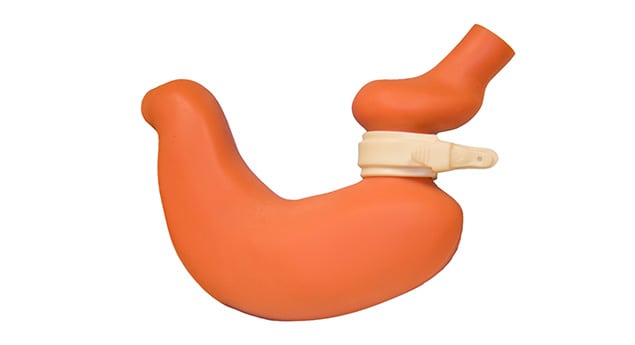
Understanding your options will help you in choosing a weight loss surgery.
When traditional diet and exercise fail to help a patient lose weight, there may be other weight loss alternatives that can help. The Lap-Band System, also known as gastric banding, allows those struggling with obesity to lose a significant amount of weight in a relatively short time period, although results can vary.
- The average weight that is lost following a gastric banding procedure varies for each patient as well, but the percentage lost is typically higher in the first year.
- Those with gastric banding are recommended to follow up with their surgeon so that the band can be adjusted as needed.
CONTACT US TODAY
How Does the Lap-Band System Work?
Gastric banding is a minimally invasive procedure where a surgeon places an adjustable belt around the top part of the stomach. This band restricts the size of the stomach and the amount of food that can be eaten. The band also causes the patient to feel full much more quickly, causing them to eat less. The band itself is made from silicone and can be adjusted based on the patient’s needs and the desired weight loss outcome. To tighten the band, saline is added through a port located just under the skin. The saline can also be removed, causing the band to loosen.
Putting the band in place is a relatively simple procedure that should only last about one to two hours. The surgeon will make three to five small incisions in the abdomen. A small camera is placed into the incision and shows the upper part of the stomach on a screen. The surgeon then places the band around the stomach and uses sutures to keep the band in its proper place. The port is also sutured in place in the wall of the abdomen.

Candidates for Lap-Band
Candidates for gastric banding generally have a high body mass index, though individuals who have a lower BMI may also be eligible if they suffer from conditions that are often weight-related, such as hypertension and diabetes. The procedure is designed for adults, so potential candidates must be at least 18 years old. Further, a patient may not be considered a candidate if they are on certain medications, have an addiction to drugs or alcohol, or has underlying medical conditions that may make the procedure unsafe.
Many surgeons and programs aimed at helping people lose weight recommend that gastric banding should be utilized when other methods of weight loss have not been successful. Candidates must also show that they can adhere to certain lifestyle changes that will increase the chances of the procedure being more successful, such as a change in diet and exercise.
Preparing for the Procedure
In some cases, patients may be asked to make lifestyle changes before the procedure takes place. Depending on the current diet, this may include eating smaller, healthier meals and weaning off high caloric foods. If the patient has a BMI of 50 or more, the procedure may be delayed until the patient can lose 5 to 10 percent of their current body weight. This can improve the potential outcome after the surgery and reduce the risk of complications. Your doctor will give you specific instructions before your surgery.
Recovering From the Lap-Band Procedure
Patients should expect some slight pain and discomfort immediately following the procedure. It should be noted that there may be little change in appetite until the patient goes to the surgeon for a follow up at the six-week mark. Until then, those who undergo gastric banding can usually return to work after about one week if that job is not too physically demanding. Full recovery usually takes about five to six weeks.
What Happens After the Lap-Band Procedure?
After the six-week mark, the band will need to be occasionally adjusted with saline. This is usually done by the surgeon who performed the procedure. Filling or loosening the band is painless. When the band is tightened, weight loss can become dramatic. The amount lost per week varies from one patient to the next. Progress will eventually slow down. To keep progress moving as intended, it is imperative that those with a gastric band continue to follow their diet plan that was recommended by their surgeon and weight loss team.

